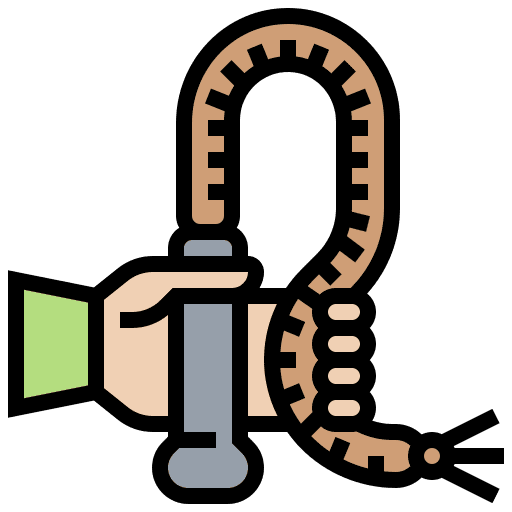What is Equine Pre-Purchase Examination?
An equine pre-purchase exam is a single-day assessment that evaluates the overall health and soundness of a horse you’re considering buying. It’s not a simple pass or fail test, as many assume.
Rather than providing a definitive verdict, this thorough examination focuses on identifying potential risks associated with your purchase.
During this comprehensive assessment, a veterinarian methodically checks all major body systems for abnormalities. This includes cardiothoracic, dermatologic, oral, ophthalmic, musculoskeletal, neurologic, and reproductive systems.
For sport horses, diagnostic imaging may include up to 42 radiographic views covering the feet, fetlocks, hocks, stifles, neck, and back. However, it’s crucial to understand that although these examinations are thorough, they cannot guarantee future soundness or performance.
The process typically follows a structured approach with two to five stages, depending on the thoroughness required. If significant issues are identified early, not all stages may be completed.
Although primarily conducted between amateur buyers and veterinarians, clear communication regarding expectations is essential for this risk assessment to effectively serve your needs when making such a significant investment.
Understanding the Purpose of a Pre-Purchase Exam
A pre-purchase examination (PPE) serves as a clinical assessment of a horse at the time of sale, designed to identify potential health issues that might affect its suitability for your intended use.
This crucial step in horse buying requires a clear understanding of what the examination can—and cannot—provide.
Why a PPE is not a guarantee
The equine pre-purchase exam represents merely a snapshot in time, examining the horse’s condition on that specific day.
Fundamentally, it cannot predict future health or soundness issues that may develop. As veterinary experts emphasise, “A pre-purchase examination does not eliminate risks”. Even the most thorough vetting cannot foresee how a horse’s condition might change weeks or months after purchase.
The examination aims to identify pre-existing problems or potential issues that could affect future soundness, such as early signs of degenerative joint disease.
How it helps reduce buyer risk
Despite its limitations, a properly conducted equine pre-purchase exam significantly reduces your purchasing risks. The examination provides vital information about the horse’s current health status, enabling you to make an informed decision.
According to professional guidelines, the primary objective is to “reduce the buyer’s risks in relationship to the general health and athletic soundness of the horse for sale“. Furthermore, a comprehensive PPE allows your veterinarian to assign a degree of risk relative to your specific requirements—whether you need a horse for competitive dressage or casual trail riding.
Common misconceptions about horse vetting
- It is a common misconception that horses should “pass” or “fail” the vetting process. However, veterinary specialists assert that the words “pass” and “fail” have never appeared in any paperwork associated with pre-purchase exams.
- Instead, the veterinarian offers an opinion on how the clinical findings might influence the horse’s suitability for your intended purpose.
- Additionally, many buyers mistakenly believe that sellers’ vetting reports offer the same protection as commissioning their own examination.
- Yet legal experts clarify that “a vet will always owe a duty of care to their client, but may not owe one to a third party”. Consequently, purchasing a horse based solely on the seller’s veterinary report offers limited legal protection should issues arise later.
- Understanding these fundamental aspects of the equine pre-purchase exam enables you to approach horse buying with realistic expectations and appropriate caution.
Preparing for the Examination
Proper preparation prior to an equine pre-purchase exam creates a foundation for informed decision-making. The steps you take before the veterinarian arrives can significantly impact the value and outcomes of this crucial assessment.
Clarifying roles: buyer, seller, trainer, vet
The pre-purchase examination involves several key participants, each with distinct responsibilities. As the buyer, you initiate the process, select the veterinarian, and make the final purchase decision.
The seller must provide access to the horse, handle it during examination, and disclose relevant history. Trainers or agents often serve as your representative, helping assess suitability beyond clinical health.
Primarily, the veterinarian works for you—the buyer—conducting an impartial assessment and communicating findings directly to you.
Discussing expectations and intended use
Before scheduling an examination, clearly articulate your intended use for the horse. Will it compete at specific levels or serve as a recreational mount? Discuss with your veterinarian what management issues you’re willing to address and which would be dealbreakers. This conversation helps tailor the examination to your specific needs and budget constraints.
Legal forms and equine pre-purchase exam form
Essential documentation includes:
- A health history form completed by the seller
- Written permission from the seller for any interventional procedures
- A limited examination form if not conducting all five stages
- Release forms for riding assessment and payment
These documents establish clear expectations and permissions, protecting all parties involved.
Avoiding conflicts of interest
Select a veterinarian who has never treated the horse nor worked for the seller. In situations where using the seller’s vet is unavoidable, additional safeguards become essential: the seller must permit full disclosure of the horse’s clinical history, you must acknowledge the potential conflict, and the veterinarian must clearly establish they’re acting on your behalf. Independent assessment remains vital for truly objective findings.
Step-by-Step Breakdown of the Exam
The equine pre-purchase examination follows a systematic, sequential process designed to thoroughly evaluate a horse’s health and soundness. Each stage serves a specific purpose in building a comprehensive assessment.
Stage 1: Initial observation and identification
The examination begins with a thorough clinical assessment of the horse at rest. During this phase, the veterinarian verifies the horse’s identity using its passport and microchip records.
The vet inspects the eyes in a dimly lit stable with an ophthalmoscope, listens to the heart and lungs with a stethoscope, and examines the teeth to estimate the horse’s age.
Additionally, the vet carefully palpates the limbs, checks the skin for abnormalities, and assesses the overall conformation.
Stage 2: Movement and flexion tests
Subsequently, the horse is walked and trotted in hand on a firm, level surface to detect any gait irregularities. Flexion tests—where each limb is held in a flexed position for approximately 30-60 seconds before the horse trots away—help identify subtle lameness issues. The horse is usually also trotted on a small circle on both hard and soft surfaces to further expose any potential problems.
Stage 3: Exercise and recovery
Throughout this stage, the horse undergoes strenuous exercise, typically under saddle (or lunging for unbroken horses). This crucial phase serves multiple purposes: revealing subtle lameness, assessing respiratory function, and monitoring cardiac response to exertion. The veterinarian listens for abnormal breathing sounds while observing the horse’s movement at different gaits.
Stage 4: Rest and re-evaluation
Following exercise, a 20-30 minute rest period allows the horse to recover while the veterinarian monitors heart and respiratory rates as they return to baseline. This interval also permits time for verifying documentation, checking microchip details, and collecting blood samples for potential drug screening if requested.
Stage 5: Final trot-up and lameness check
The examination concludes with another trot-up assessment, specifically looking for signs of exercise-induced stiffness or lameness that weren’t apparent earlier. Flexion tests may be repeated at this stage to provide a direct comparison with the initial results.
Advanced Testing and Risk Assessment
Beyond the standard five-stage examination, advanced diagnostic testing plays a crucial role in equine pre-purchase assessments. These additional procedures offer deeper insights and can substantially influence your buying decision.
When to use diagnostic imaging for equines
Diagnostic imaging becomes essential based on several factors: the horse’s purchase price, intended discipline, and any concerns identified during the clinical examination. Notably, most insurance companies require radiographs for horses valued above £15,000.
For expensive competition horses, comprehensive imaging helps establish baseline health records and identifies potential issues before they become problematic.
Equine x-rays and what they reveal
Radiography remains the most common diagnostic procedure in pre-purchase examinations. Standard radiographic areas typically include:
- Front feet (shoes may need removal)
- Front and hind fetlocks
- Hocks
- Stifles
- Neck and back (increasingly common)
These images can reveal joint abnormalities like arthritis, bone spurs, and conditions such as osteochondrosis dissecans. Nevertheless, bear in mind that many horses with radiographic abnormalities show no clinical lameness signs. For optimal assessment, consider having pre-purchase x-rays reviewed by a board-certified veterinary radiologist.
Equine bloodwork and drug screening
During the examination, veterinarians typically collect blood samples for storage at forensic laboratories for six months. This practise protects both buyer and seller if questions arise post-purchase.
The blood can be tested for sedatives, pain relief medications, anti-inflammatories, or bronchodilators that might mask lameness or behaviour issues. Standard drug screening results generally take 4-10 days, whilst testing for long-acting tranquillisers requires 5-15 days.
Interpreting clinical findings and red flags
Remember that clinical findings noted on vetting certificates will generally be excluded from insurance policies. Essentially, radiographic abnormalities must be interpreted within the context of the horse’s intended use—what might be problematic for an elite showjumper might be inconsequential for a recreational mount.
Many off-track Thoroughbreds, for instance, have dorsal spinous process impingement (kissing spines) yet enjoy successful second careers.
Conclusion

Welcome to Sell Your Horse, a platform dedicated to connecting equestrians with each other, making horse buying and selling easier and more transparent. With a focus on technology and community-building. My mission is to help like-minded equestrians find the right connections, share knowledge, and build a trusted equine network.






 Featured Listings
Featured Listings
 Adverts
Adverts
 Horses For Sale
Horses For Sale
 Tack & Equipment
Tack & Equipment
 Horseboxes & Trailers
Horseboxes & Trailers
 Equine Properties
Equine Properties
 4x4 Vehicles
4x4 Vehicles
 Horses For Loan
Horses For Loan
 Horses Wanted
Horses Wanted
 Stallions at Stud
Stallions at Stud
 Equine Services
Equine Services
 Riding Holidays
Riding Holidays

